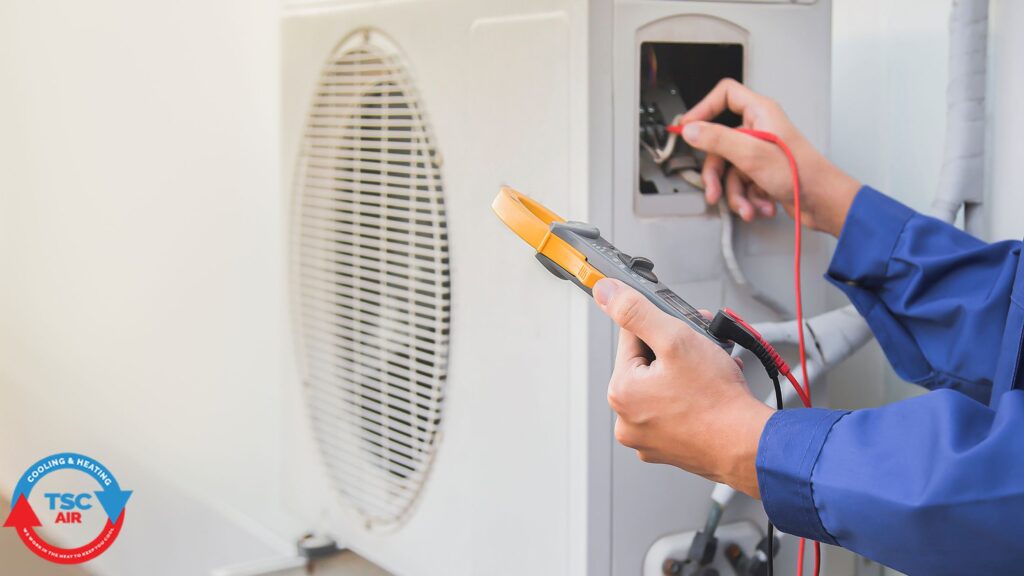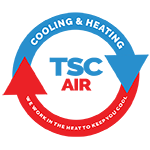5 Proven Strategies to Boost HVAC Efficiency in Phoenix Homes

At TSC Air, we know firsthand how the relentless Arizona sun can drive up your energy costs while putting immense strain on your air conditioning system. As a family-owned HVAC business serving Phoenix, Scottsdale, Tempe, and surrounding areas since 2007, we’re dedicated to helping homeowners boost HVAC efficiency without unnecessary expenses or high-pressure sales. With temperatures often lingering above 100°F well into September, optimizing your AC isn’t just about comfort—it’s about slashing those skyrocketing utility bills and extending the life of your equipment.
In this comprehensive guide, we’ll dive into five proven strategies to boost HVAC efficiency, drawing from our years of experience in HVAC repair in Arizona. Whether you’re dealing with an aging unit or simply want to minimize energy costs, these tips can help you achieve noticeable savings. And if issues persist, we can discuss options like HVAC replacement to ensure long-term performance.

Before we explore these strategies, consider this insight from Don Kaczmarek, one of the owners of TSC Air: “In Phoenix’s extreme climate, small adjustments to your AC system can lead to big reductions in energy costs. We’ve seen clients cut their bills by 15-20% just by implementing basic efficiency measures.”
Optimize Thermostat Settings to Boost HVAC Efficiency in Arizona’s Harsh Heat
One of the simplest yet most effective ways to boost AC performance is by fine-tuning your thermostat settings. In Phoenix homes, where outdoor temperatures can fluctuate wildly between day and night, a programmable or smart thermostat allows you to align cooling cycles with your lifestyle, preventing unnecessary energy waste.
For instance, setting your thermostat to 78°F during occupied hours and raising it to 82°F when you’re away can reduce energy costs by up to 10% per degree, according to the U.S. Department of Energy. This is especially crucial in areas like Mesa and Chandler, where homes often have large windows that amplify heat gain.
We at TSC Air recommend investing in Wi-Fi-enabled thermostats that integrate with apps for remote control. These devices learn your patterns over time, automatically adjusting for Arizona’s variable weather. If your current thermostat is outdated, it might be contributing to inefficient operation, leading to higher energy costs and potential HVAC repair needs. During our no-contract maintenance visits, we often identify thermostats that are miscalibrated, causing systems to overwork. By optimizing these settings, you not only boost HVAC efficiency but also delay the need for HVAC replacement, saving thousands in the long run.
To implement this strategy effectively, start by auditing your daily routine. If your home is empty from 9 AM to 5 PM, program the thermostat to minimize cooling during those hours. In humid September conditions, incorporate dehumidification modes to enhance comfort without lowering temperatures excessively.
For homes in Scottsdale with high ceilings, zoning systems can further boost HVAC efficiency by directing cool air only where needed. If you’re unsure about compatibility, our technicians can assess your setup during a free estimate, ensuring seamless integration without disrupting your system.
Don Kaczmarek adds, “Smart thermostats are a game-changer for Phoenix residents looking to boost HVAC efficiency. They empower homeowners to take control, turning what was once a set-it-and-forget-it device into a dynamic tool for energy savings.”
Seal Ductwork to Prevent Cool Air Loss and Boost HVAC Efficiency
Leaky ductwork is a silent killer of AC performance in Phoenix homes, where dust and extreme temperatures exacerbate gaps and cracks. According to industry experts, unsealed ducts can waste up to 30% of your cooled air, forcing your system to run longer and inflating energy costs. To boost HVAC efficiency, inspect your ductwork for leaks, particularly in attics or crawl spaces exposed to Arizona’s intense heat. Use mastic sealant or metal tape—avoid duct tape, as it degrades quickly in our climate—to seal joints and connections.
At TSC Air, we’ve handled countless HVAC repair in Arizona calls stemming from poor duct sealing, which not only hikes bills but also introduces allergens into your home. Professional sealing can improve airflow by 20-25%, directly contributing to boost HVAC efficiency. If your ducts are old or damaged, consider aeroseal technology, which injects a polymer sealant from inside, minimizing disruption. This is particularly beneficial in older Tempe residences with rigid metal ducts that have settled over time.
Beyond basic sealing, ensure insulation around ducts meets R-8 standards for Arizona’s climate zone. Poorly insulated ducts in unconditioned spaces can heat up cooled air before it reaches rooms, undermining efficiency. During our tune-ups, we check for these issues, often recommending upgrades that pay for themselves in reduced energy costs within a year. If leaks are severe, it might signal the need for partial HVAC replacement, but our approach is always repair-first to keep HVAC replacement costs manageable.
Change Air Filters Regularly for Optimal Boost in AC Efficiency
Clogged air filters are one of the most common culprits behind reduced AC performance, especially in dusty Phoenix environments. To boost HVAC efficiency, replace filters every 30-60 days, opting for pleated models with MERV ratings of 8-13 to capture fine particles without restricting airflow. A dirty filter can increase energy consumption by 15%, as your system strains to push air through blockages, leading to higher energy costs and premature wear.
We at TSC Air emphasize this in our maintenance programs, where we inspect and replace filters as needed. In areas like Gilbert and Ahwatukee, where pollen and construction dust are prevalent, high-efficiency filters can also improve indoor air quality, reducing allergy triggers. If your system uses reusable filters, clean them monthly with gentle soap and water, ensuring they’re fully dry before reinstallation to avoid mold growth in Arizona’s occasional humidity spikes.
For homes with pets or smokers, consider upgrading to electrostatic filters that trap more contaminants, further helping to boost HVAC efficiency. Neglecting this step often results in HVAC repair calls for frozen coils or compressor failures. If your filters are consistently dirty, it might indicate duct issues or an undersized system, prompting a discussion on HVAC replacement costs to find a more efficient unit tailored to your home’s square footage.
Shade Outdoor Units to Enhance AC Performance and Reduce Energy Costs
Direct sunlight on your condenser unit can raise its operating temperature, making it work harder and diminishing efficiency. To boost AC, provide shading with lattice screens, awnings, or strategically planted shrubs, ensuring at least 2-3 feet of clearance for airflow. In Phoenix’s scorching September sun, this can improve efficiency by 10%, as the unit expels heat more effectively in cooler conditions.
At TSC Air, we advise against full enclosures, which trap heat and debris. Instead, opt for breathable shades that block UV rays while allowing ventilation. For ground-mounted units in Mesa backyards, reflective mulch around the base can further deflect heat. During installations or HVAC repair in Arizona, our team assesses unit placement, sometimes recommending relocation to shaded areas for optimal performance.
This strategy pairs well with overall home shading, like installing energy-efficient windows or awnings, to minimize indoor heat gain. By reducing the load on your AC, you not only cut energy costs but also extend equipment life, potentially avoiding HVAC replacement for years. If shading isn’t feasible, consider high-efficiency units designed for hot climates, which we can quote during a free estimate.
Schedule Professional Tune-Ups to Maximize HVAC Efficiency and Longevity
Even the best-maintained systems benefit from expert eyes, which is why scheduling a tune-up is key to boost HVAC efficiency. At TSC Air, our $24/month no-contract program includes comprehensive checks: cleaning coils, verifying refrigerant levels, lubricating parts, and testing electrical connections. In Arizona’s harsh conditions, these services can prevent breakdowns and maintain peak efficiency, often uncovering issues before they escalate into costly HVAC repair.
Tune-ups typically improve efficiency by 5-15%, directly lowering energy costs. For older systems in Scottsdale, this might involve calibrating components to handle heat loads better. If inefficiencies persist, we discuss HVAC replacement options, focusing on energy-star rated models that qualify for rebates. Our goal is always transparency—repair if possible, replace only when necessary, keeping HVAC replacement costs fair and justified.
Don Kaczmarek notes, “Regular tune-ups are the cornerstone of HVAC efficiency in Phoenix. They ensure your system runs smoothly, saving money and headaches down the line.”
Expanding on these strategies, let’s delve deeper into how they interconnect. For example, combining thermostat optimization with duct sealing creates a synergistic effect, where controlled cooling meets efficient distribution. In Phoenix’s older neighborhoods like Tempe, where homes may have original ductwork from the 1980s, this combo can transform a sluggish system into a powerhouse. We’ve seen clients in Chandler reduce their summer bills by $200 monthly through such integrated approaches.
Moreover, understanding refrigerant types plays a role in efficiency. Modern systems using eco-friendly options like R-32 offer superior performance, as we’ll touch on later. But first, consider the broader impact: Arizona’s energy grid strains under peak demand, and efficient homes contribute to sustainability. By implementing these tips, you’re not just saving personally but aiding community-wide efforts.
Another layer is smart home integration. Pairing your AC with voice assistants or automation hubs allows for proactive adjustments, like pre-cooling before you arrive home. In Gilbert’s family-oriented communities, this means comfort without waste. If your system isn’t compatible, a partial upgrade—short of full HVAC replacement—might suffice, and our experts can guide you.
We also can’t overlook the role of insulation in HVAC efficiency. Attic insulation with R-30 or higher prevents heat from seeping in, complementing duct sealing. In Maricopa’s newer developments, spray foam insulation is popular for its airtight seal, reducing the need for constant cooling. If your insulation is subpar, it amplifies energy costs, making professional audits essential.
Ventilation strategies further enhance these efforts. Whole-house fans or attic ventilators expel hot air, lightening the AC load. In Phoenix’s dry climate, evaporative coolers as hybrids can boost HVAC efficiency during milder days, though we recommend professional installation to avoid humidity issues.
Finally, monitoring your system’s age is crucial. Units over 10 years old often operate at 60-70% efficiency compared to new models. When HVAC replacement becomes inevitable, factor in SEER ratings above 16 for Arizona. Our flexible plans help bridge the gap, ensuring you’re prepared.
Take Control of Your AC Efficiency Today
In summary, these five strategies—optimizing thermostats, sealing ducts, changing filters, shading units, and scheduling tune-ups—provide a roadmap to boost HVAC efficiency and combat rising energy costs in Phoenix homes. By prioritizing maintenance and smart upgrades, you can enjoy reliable cooling while minimizing expenses and environmental impact. At TSC Air, we’re here to support your journey toward a more efficient home.
Upgrade to R-32 Refrigerant for Superior Efficiency
Ready to elevate your AC system? Consider transitioning to R-32 refrigerant, a cutting-edge solution that delivers up to 10% better energy efficiency compared to traditional options like R-410A. With its lower Global Warming Potential of 675 and zero Ozone Depletion Potential, R-32 aligns perfectly with Arizona’s push for sustainable living, offering cost savings through reduced power consumption and easier recycling. At TSC Air, we specialize in R-32 conversions and installations, ensuring your system performs optimally in our extreme heat.
Don’t wait for breakdowns—schedule a free consultation today to explore how R-32 can boost HVAC efficiency and lower your energy costs. Our experts will assess your current setup, discuss HVAC repair or HVAC replacement needs, and provide tailored recommendations without any contracts or obligations. Whether you’re in Tempe or beyond, upgrading to R-32 means quieter operation, longer system life, and a greener footprint.
Contact us seamlessly at TSC Air, located at 1022 W 23rd St, Tempe AZ 85282. Give us a call at 855-TSCAIR-5 or email info@tscair.com to get started. As your trusted HVAC partner, we’re committed to helping you stay cool and efficient—let’s make your home more comfortable and affordable today.
